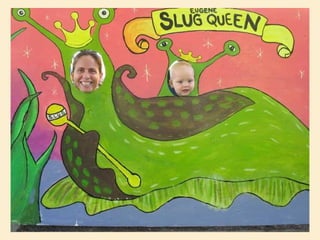Mollusks
•
19 likes•8,551 views
a brief overview of mollusks for an introductory class
Report
Share
Report
Share

Recommended
More Related Content
What's hot (20)
Similar to Mollusks
Similar to Mollusks (20)
More from Christina Drumm
More from Christina Drumm (20)
Recently uploaded
APM Welcome, APM North West Network Conference, Synergies Across Sectors

APM Welcome, APM North West Network Conference, Synergies Across SectorsAssociation for Project Management
Recently uploaded (20)
Z Score,T Score, Percential Rank and Box Plot Graph

Z Score,T Score, Percential Rank and Box Plot Graph
Call Girls in Dwarka Mor Delhi Contact Us 9654467111

Call Girls in Dwarka Mor Delhi Contact Us 9654467111
APM Welcome, APM North West Network Conference, Synergies Across Sectors

APM Welcome, APM North West Network Conference, Synergies Across Sectors
Separation of Lanthanides/ Lanthanides and Actinides

Separation of Lanthanides/ Lanthanides and Actinides
BAG TECHNIQUE Bag technique-a tool making use of public health bag through wh...

BAG TECHNIQUE Bag technique-a tool making use of public health bag through wh...
The byproduct of sericulture in different industries.pptx

The byproduct of sericulture in different industries.pptx
Beyond the EU: DORA and NIS 2 Directive's Global Impact

Beyond the EU: DORA and NIS 2 Directive's Global Impact
Measures of Central Tendency: Mean, Median and Mode

Measures of Central Tendency: Mean, Median and Mode
Kisan Call Centre - To harness potential of ICT in Agriculture by answer farm...

Kisan Call Centre - To harness potential of ICT in Agriculture by answer farm...
Mollusks
- 6. Snail
- 7. Slugs
- 12. Clams
- 14. The Mantle:
- 17. Habitat:
- 25. Bivalves
- 29. Clamming on the Beach in Oregon
- 30. Giant Clams
- 31. Scallop
- 34. Mussels
- 35. Abyssal threads on a mussel
- 37. Gastropods (“stomach foot”)
- 43. Pacific Northwest Banana Slug
- 44. All gastropods have a mouth with Radula
- 45. Nudibranchs – poisonous sea slugs
- 48. Abalone
- 52. Chiton
- 53. Chiton on Rock
- 54. Chiton
- 55. Limpets
- 57. Cephalopods (“head foot”)
- 63. Nautilus shell (the only shelled cephalopod)
- 65. Nautilus Eating a Crab
- 66. Squid
- 68. Giant Squid (7 meters long)
- 69. Octopus
- 70. Squid & Octopus Defense:
- 75. Octopus camouflage: http://www.youtube.com/watch?v=5rqhomPaxhE&feature=related http://www.youtube.com/watch?v=JJq-wAUmkeg
- 76. Is the octopus “intelligent”? http://www.youtube.com/watch?v=T8cf7tPoN5o
Editor's Notes
- Society for the Legitimazation of the Ubiquitous Gastropod
